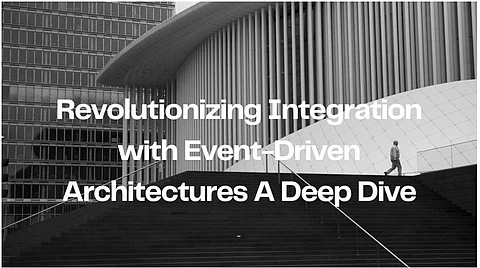

In the modern era of digital transformation, integration platforms have become indispensable for connecting distributed systems with exceptional speed, scalability, and efficiency. Kapil Pothakanoori, a recognized expert in the field, highlights the transformative potential of Event-Driven Architectures (EDA) in contemporary integration platforms. His insights delve into technical advancements, innovative architectural patterns, and strategic implementations that redefine scalability, responsiveness, and operational reliability, setting new standards for enterprises navigating complex technological landscapes. EDA is emerging as a vital enabler of next-generation integration, addressing the limitations of traditional models while unlocking new opportunities for agility and innovation.
Real-time integration across industries is being revolutionized with the transition from traditional request-response models to event-driven systems. EDA provides unmatched scalability, responsiveness, and adaptability for enterprises, enabling them to handle high-throughput demands efficiently and with precision. According to industry reports, organizations utilizing EDA experience a 65% improvement in resource utilization and a 42% reduction in system latency. These benefits make EDA a key enabler for applications in financial services, IoT ecosystems, and real-time data analytics, bringing forth more agile and efficient business operations.
EDA systems function seamlessly by virtue of three critical elements: Event Producers, Event Brokers, and Event Consumers, allowing coordinated data processing. Producers produce real-time data streams. IoT systems can produce up to 75,000 events per second. Event Brokers can have a success rate of 99.999% when guaranteeing the message delivery; EDA systems are supported with operational reliability based on Event Brokers. Consumers perform complex transformations, with parallel processing efficiencies reaching up to 94%, which enables real-time decision-making and automation. Together, these pieces ensure data integrity, reliability, and scalability across distributed architectures, ensuring smooth, secure, and continuous operations.
Architectural patterns such as event sourcing and Command Query Responsibility Segregation (CQRS) greatly amplify the potential of EDA, allowing for robust scalability and operational efficiency. Event sourcing creates an immutable log of state changes, enhancing system traceability by 76% and reducing reconciliation efforts by 65%. CQRS segregates read and write operations, enhancing read efficiency by up to 84% and making system performance smoother. Taken together, these patterns allow organizations to process millions of events each day, increasing system reliability, scalability, and responsiveness in the real world, but at a cost of decreased operational complexity.
Message queues are one of the essential success factors of EDA systems; they provide optimized performance as well as robustness in operation. High performance queues give an improvement in throughput of 235% compared with the conventional, making data flow smoother and quicker. Message structures decrease the processing overhead by 47% but keep operational consistency at 99.995%. High data streams are supported across the system without interruption. Advanced error-handling frameworks such as DLQ can automatically recover. The number of manual interventions goes down by 56%, which further decreases the system downtime to 67%. These features ensure reliable and efficient operations in demanding and dynamic environments.
Security and observability are the cornerstones of EDA implementations, addressing data protection and system monitoring requirements in complex environments. Advanced security frameworks employing multi-factor authentication and attribute-based access controls reduce unauthorized access by 92% while enhancing compliance by 84%. Observability tools such as Prometheus and Grafana enhance monitoring, thereby allowing the processing of up to 1.8 million monitoring events per second while proactively identifying potential system failures. Such capabilities ensure the stability of systems, operational reliability, proactive issues resolution, and facilitate uninterrupted delivery of services, comply with regulations, and improve performances.
The evolution of EDA is being driven by advancements in machine learning and AI-powered analytics, unlocking transformative possibilities for enterprises. Predictive models enhance event processing, optimize resource allocation, and streamline decision-making, pushing operational efficiency to new heights. Experts forecast a tenfold increase in processing capabilities within the next five years, enabling EDA systems to handle increasingly complex workloads with ease. These innovations promise resilient, scalable, and sustainable ecosystems that will meet the growing demands of future applications while fostering innovation across industries. Additionally, emerging technologies such as federated learning and decentralized AI frameworks are poised to bring even more transformative changes, particularly in areas such as security and performance optimization.
In summary, Kapil Pothakanoori concludes that Event-Driven Architectures are shaping modern integration platforms with tremendous transformative changes. Through the adoption of sophisticated architectural patterns, powerful security frameworks, and real-time monitoring tools, EDA allows enterprises to unlock unmatched scalability, responsiveness, and operational excellence. As companies increasingly embrace these advancements, the future of integration is in the resiliency, efficiency, and security of the systems driving growth, adaptability, and long-term success. These systems are not merely technological solutions but strategic enablers that are setting the stage for innovation in an increasingly connected and fast-paced digital world.
